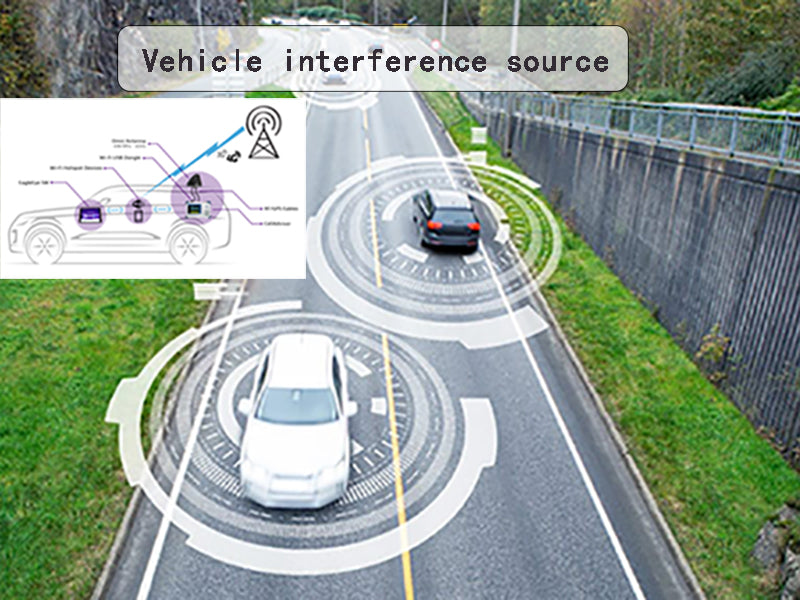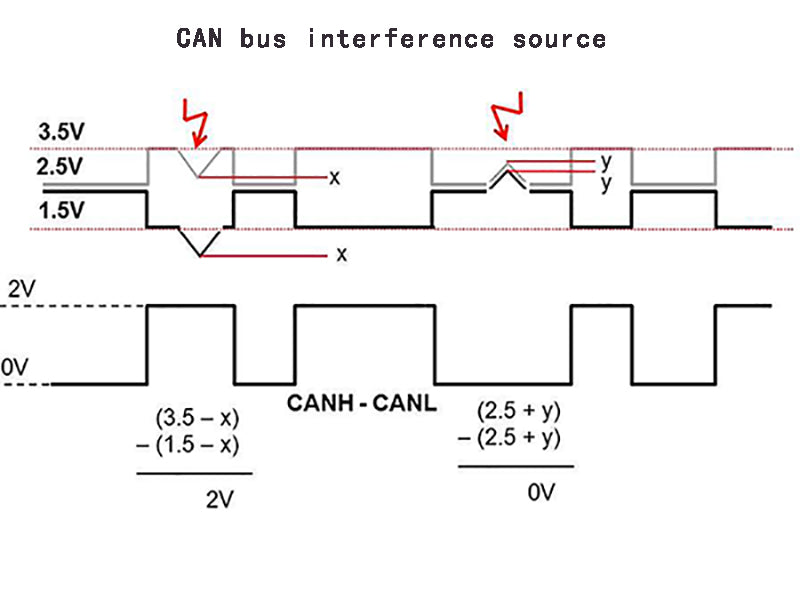
main content:
Electromagnetic interference is a harmful electromagnetic effect, which can degrade the performance of equipment or systems at light level, and cause device or system performance failure in severe cases. Usually, the previous interference source acts on sensitive objects through front door coupling or back door coupling. In general, the electromagnetic energy emitted by the electromagnetic interference source needs to be transmitted to the sensitive equipment through a certain coupling channel, causing the sensitive equipment to respond in a certain form to produce an effect. This action process and effect constitute electromagnetic interference. Therefore, regardless of the complexity of the system, all types of electromagnetic interference require the following three conditions to occur, that is, there is a source of electromagnetic interference, a path or channel for transmitting electromagnetic interference, and an object or sensitive equipment to be interfered.
The electromagnetic energy generated by the interference source is transmitted to the sensitive equipment through the existing or potential coupling path between the interference source and the sensitive equipment, thereby causing electromagnetic interference on the sensitive equipment. Depending on the interference tolerance of electronic equipment and the degree of electromagnetic interference, electromagnetic interference may have no effect on it, or it may cause the equipment to malfunction, and in severe cases, the equipment will be damaged. The essence of the electromagnetic compatibility problem is that the electromagnetic energy of the interference source is transmitted to the sensitive equipment.
The propagation methods of electromagnetic interference include direct coupling, leakage coupling, common impedance coupling, capacitive coupling, electromagnetic induction coupling and radiation coupling. The most common manifestation of direct coupling is that the interference signal is directly conducted to the interfered circuit through the wire, thereby causing interference to the circuit. These wires can be signal wires between devices, connection wires between circuits, and power wires between a power supply and a load. Leakage coupling is when the insulation resistance between adjacent components or wires decreases, a part of the signal is coupled to the input to form interference. The conduction of interference energy in the leakage coupling mode is basically the same as that in the direct coupling mode. The main difference between the two is that the direct coupling mode transmits energy through wires, and transmits the useful signal while transmitting the interference signal, but the leakage coupling does not. Send useful signals. Common impedance coupling is a conduction coupling that occurs when the signal source and the noise source have a common impedance, and the common impedance varies with the actual component configuration. Common impedance coupling interference generally occurs when the currents of several circuits pass through the same impedance, and the voltage drop of one circuit on the impedance will have a certain impact on the other circuit. Common impedance couplings include common power impedance coupling and common ground coupling. In order to avoid common impedance coupling, the coupling impedance should generally be reduced as much as possible, thereby reducing the interference current and interference voltage passing through the coupling impedance. Capacitive coupling refers to the electrostatic induction between the interference source and the interference object due to potential changes, also known as electric field coupling or electrostatic coupling. In practical applications, the distributed capacitance between the wire and the ground is often not negligible. Electromagnetic field radiation can also cause interference coupling. When a high-frequency current flows through a conductor, lines of electric force and magnetic lines of force will be generated around the conductor to form electromagnetic waves propagating in space, and the conductors in the electromagnetic waves will induce alternating electromotive force of the corresponding frequency.
The electromagnetic environment of the car means that the electronic and electrical equipment on the car is subjected to various types of electromagnetic interference from inside and outside the car during the driving process of the car, as well as the electromagnetic interference radiated by the electronic equipment on the car to the outside world. In order to better simulate the electromagnetic environment of electric vehicles, it is necessary to analyze the on-board interference sources of electric vehicles. The on-board interference sources mainly include the following types.
1. Contact discharge interference source

The electronic and electrical equipment used in electric vehicles contains many conductors such as wires, connectors and coils, which have different capacitances and inductances. Once a closed loop is formed, oscillation may occur. The various contacts distributed among them (such as switch contacts, relay contacts and motor brush contacts, etc.) will produce different degrees of sparks or arc discharges at the moment of switching, forming a source of high-frequency electromagnetic noise interference, which in turn affects other normal operation of electronic equipment. Although the energy of this inter-contact discharge is small, due to its short duration, the energy density at the moment of discharge can reach a level that is harmful.
2. Motor system interference source

The motor is the power source of the electric vehicle. The electromagnetic interference that propagates outward mainly includes conduction interference and radiation interference. Conducted interference refers to the electromagnetic interference emitted by the internal circuit of the motor and propagated along the external power line. Disturbances emitted by the internal magnetic circuit and propagated outward in the form of electromagnetic waves through the external space. Conducted emission is an important feature of DC motor EMC. Many broadband interference noise signals are emitted through power lines. The main reason is that the parasitic capacitance, coupling inductance, and grounding resistance in various coils are not zero, and the coils are distributed to the ground. Capacitance, magnetic field waveform distortion caused by armature reaction, and poor commutation, etc.
3. CAN bus interference source

Under normal circumstances, the CAN bus will generate large conducted interference during normal operation. The nodes that generate conducted interference include switching power supplies, servo systems and controllers, etc., while larger interference is generated by high-power power electronic equipment. Transient interference is characterized by short time, large amplitude and low power. Rapid electrical burst interference, lightning or high-power switching caused by current transient changes will produce large surges, electrostatic discharge induction, etc. on the cable. CAN bus cable is an important way of conducting interference propagation. In order to ensure the reliability of bus communication, it is necessary to apply equipment or measures such as LC filter, transient suppression diode and photoelectric isolation in the system.
4.Powertrain controller interference source

The vehicle powertrain controller has been in the electromagnetic environment of the vehicle for a long time, and it is very sensitive to the change of the electromagnetic environment in the vehicle. The change of the electromagnetic field in the space will cause different degrees of interference to the vehicle control system. The powertrain controller is powered by the vehicle battery, and there are large-capacity inductive loads in the system. When these inductive loads are cut off, a large voltage and current change rate will be generated, so it will have a greater impact on the control system. The disturbance caused by the instantaneous change of the inductive load is one of the main forms of disturbance. In addition, a large number of wires connecting the powertrain controller to the power supply and other equipment will also generate electromagnetic coupling during operation, which can be divided into common mode noise and differential mode noise according to the conduction mode. The electromagnetic interference sources in the powertrain controller are the on-board PCB circuit boards and electrical equipment that are dominated by inductive load transients. These sources of interference may affect the normal operation of the powertrain controller, and even cause failure in severe cases. , causing a security risk, so it cannot be ignored.
5. DC/DC converter interference source

The theory and practice of electromagnetic interference consistently show that the nature of the interference source is changing current and changing voltage. In addition, there are also relative strengths between different interference voltages and different interference currents. Usually, relatively strong interference voltages and interference currents are the main sources of interference, and they are less susceptible to interference; while relatively weak interference voltages and interference currents are the main sources of interference. Current is a secondary source of interference and may also be a source of interference. In the power system of the electric vehicle, the high-power DC/DC converter is an important part, and the interior is composed of the main circuit and the control circuit, and the two are connected through the interface harness. The periodic commutation action of the commutation unit in the DC/DC converter is the root cause of the interference, and the parasitic elements in the circuit not only enhance the high-frequency interference, but also change the antenna effect of the power supply and the load.
















